Hypersonic "Tu"
"DP"
In 1958, the OKB A.N. Tupolev was assigned to carry out research work on the subject of “DP” - Dalny Planner. According to the original idea of the customer, the “DP” aircraft was to be used as the last stage of the airborne missile strike system. The launch vehicle (almost all the medium-range and long-range missiles of that time were proposed for this role) took the plane into the above-atmospheric space, where it was undocked and sent to the target independently in unmanned mode. According to the research results, the Tupolev designers concluded that the optimal uncoupling height is 80-100 kilometers, depending on the distance to the target. Curious was the design of the designed "DP". Due to the high speed of the apparatus, after it was separated from the rocket, it was decided to finally abandon any main engine (hence the “planning” index), and to ensure the system’s operation, the aircraft was supposed to be equipped with a set of electric batteries and compressed gas cylinders.
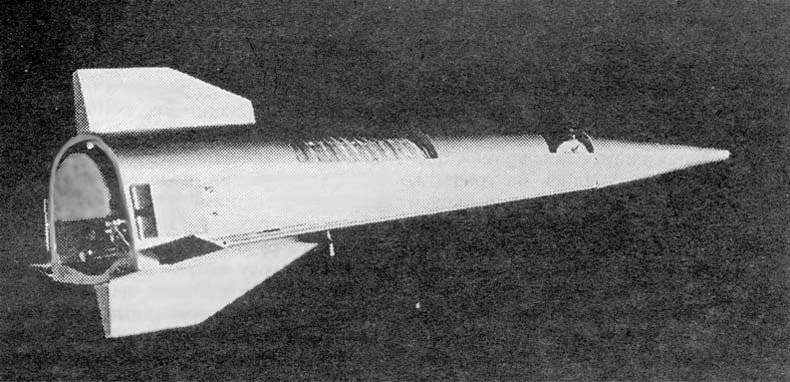
Combat load "DP" initially worked out in two versions. According to the first, at the right moment a nuclear charge was dumped at a high altitude and the plane, leaving a dive, went "home." However, to ensure acceptable accuracy of hitting the target in such a case was, to put it mildly, difficult. In addition, the aircraft would hardly withstand the overload that occurs at the exit of the dive. Therefore, they refused the first option and began to work on the second one. According to him, the warhead was part of the design of the aircraft. Undermining the warhead, of course, will destroy the aircraft, but it is possible to create a much more accurate delivery system.
The project "DP" for its time looked more than promising. First, the military was captivated by the accuracy of the hit. It was significantly higher than that of the then ballistic missiles. Secondly, it was already clear then that soon all the leading countries would begin to create anti-missile defenses, and the assumed flight profile of the “DP” looked like a bomber’s anti-aircraft maneuver. Accordingly, using the "DP" plane for the delivery of nuclear charges, it would have been possible for several years or even decades not to worry about the enemy's missile defense system.
Research and preliminary design work on the topic "DP" took more than three years. In addition to the Tupolev Design Bureau, TsAGI, VIAM, LII and many other organizations were engaged in them. It is understandable, in addition to directly design issues, it was necessary to solve a number of related issues. Thus, high flight speeds in the final trajectory section required heat-resistant plating materials and power kit, while the fuselage and wing lines should provide acceptable aerodynamics, but not increase the heating of the structure. Finally, it was necessary to conduct an analysis of all possible flight paths and select from them the most suitable for a variety of parameters. In the course of these works, among other things, several experimental devices were built, on which certain technologies and ideas were tested.
«130»
All experimental aircraft were made in the framework of the project "130" (Tu-130). For several reasons, it was decided to withdraw the hypersonic ballistic experiments into a separate project. Already during the work on the project “130”, first of all, once again checked the aerodynamic layout of the future experimental apparatus. The classical scheme with a wing and tail, “duck”, tailless, flying wing, etc. were considered. An interesting fact is that at that time, TsAGI did not yet have hypersonic wind tunnels. Therefore, the tests had to be carried out in a specially created installation, in which the acceleration of the model took place with the help of a special gun. As a result of the purging, the tailless scheme was recognized as the optimal one, with a certain likeness of what is now called the carrier fuselage. Stabilizers were placed in the tail section. Having chosen the main direction of work, the Tupolev designers created several models of the 130 aircraft in different configurations. They were equipped with solid-propellant rocket engines and instrumentation. The launches of these models were made from the Tu-16LL flying laboratory. In several flights, we managed to accelerate the experimental layout to a speed almost six times the speed of sound.
By the end of 59, the research came to an end and the Tupolev Design Bureau began the creation of the 130 aircraft itself. For it they took the tailless model with a carrying body and tail. In general, the aerodynamic layout of the full-size Tu-130 hardly differed from the model that "won the competition." The only noticeable change was the vertical keel: a small stabilizer was installed on its upper part. As a result, the 130 aircraft began to look like this: a semi-elliptic fuselage with a length of 8,8 meters in section, a wingspan of a stabilizer wing - 2,8 m and a height of 2,2 meters. Only two stabilizer wings and two keels are attached to the outer surface of the fuselage. Around the wing span with 75 ° sweep elevons were placed. There were no rudders on the keels, but on their side surfaces there were four brake plates. Removal of shields in the flow occurred on the principle of scissors. It was proposed to manufacture most of the power set and skin of the aircraft from heat-resistant steel alloys. The socks of the wing, the carinae, and the front fairing of the aircraft were faced with a special graphite material.
At this stage, they again returned to the idea of the returned apparatus. As of the project at the beginning of 1960, the flight should have been as follows. The launch vehicle lifts the 130 aircraft to a height of the order of 90-100 kilometers and drops it. At this moment there is a correction of the trajectory of the aircraft and then it plans towards the target. With an initial flight speed of about M = 10, the flight range could reach four thousand kilometers. The on-board equipment made it possible to adjust the flight parameters several times during the flight, but for the test period they decided to confine themselves to only one adjustment after separation from the rocket. At the end of the flight, the “130” was supposed to slow down by going into the climb and opening the brake flaps. As soon as the speed dropped to an acceptable value, a parachute was ejected from the tail end of the apparatus, which initially served as a brake and then a landing one.
Originally planned to build five prototypes of hypersonic gliders, which were laid at the end of 59-th. A few months later, the first airframe was ready and at the pilot plant began the installation of control, cooling and measurement equipment. At the same time, in OKB-586 under the leadership of M.K. Yangel made revision of the rocket P-12. To install the 130 aircraft, it was necessary to place a new docking station on it, as well as to strengthen the structure due to the increased mass of the output load.
The Tupolev and Yangel design bureaus have already begun to prepare for the first launch of the P-12 rocket with the Tu-130 "on board", but already in February 1960, the project of the hypersonic airframe was given to the design team under the guidance of V.N. Chelomey.
To space!
However, the closure of the Tupolev project "130" did not bury all the developments of the design office on the subject of hypersonic aircraft. Just a few years after the transfer of “130” to Chelomey, the work on the ideological continuation of “DP” and “130” was continued. In the second half of the sixties, a new direction appeared in the aerospace industry, as it then seemed, universal and very promising. These were aerospace planes (VKS). The new direction promised to provide both military and civilian vehicles with a new level, which has a significant number of advantages over the existing one. So, outside the atmosphere, one can reach much higher speeds than in the air, and taking off and landing “in an airplane” should significantly reduce the cost of the flight. In addition, an aerospace plane can also be used to bring spacecraft to low orbits.
Since 1968, the Tupolev Design Bureau has been working on several VKS projects with different configurations, take-off weight and power plant. Thus, the take-off mass of promising vehicles ranged from 250 to 400 tons, and not only traditional liquid-propellant rocket engines were offered as a power plant, but also nuclear with hydrogen as a working medium. Of course, from today's point of view, such projects look like sheer fiction, but at the end of 60's they were considered really promising and quite realistic. But, unfortunately, only engineers saw them as real. A potential customer in the person of the Ministry of Defense preferred to missiles already mastered by aerospace aircraft. Therefore, the Tupolev design bureau has not started a normal design work on any of the VKS options.
However, it is unlikely that only the inertia of the military adversely affected the fate of the Tupolev aerospace system. For example, a nuclear rocket engine, even by today's standards, is the technology of the future, not to mention the end of 60. In addition to technological complexity, they had a number of other problems. The most tangible of them is the radioactivity of the jet stream. Because of this, the take-off of an aerospace plane with a nuclear engine must occur either in a specially designated area (it is unlikely that anyone will allow it), or with the help of additional engines. The Tupolev Design Bureau proposed for this purpose the use of a specially created turbojet engine operating on liquid hydrogen. On the one hand, such fuel eliminated the need to refuel the aircraft with two fuels at once, but on the other hand, such an engine needed to be created almost from scratch. For reference: the first flight of an aircraft with a liquid hydrogen engine - Tu-155 - took place only in the year 1988.
Fortunately, the developments on the subject of videoconferencing were not in vain. The same Tu-155 could not even appear, if at one time at the firms of Tupolev and Kuznetsov had not conducted some studies on the prospects for cryogenic fuel. Yes, and at present liquid hydrogen is considered one of the most profitable promising types of fuel, including for aerospace planes.
The orbital plane
The interest of the Soviet military in aerospace systems appeared only in the late seventies - early eighties. Then it became known that the creation of the Space Shuttles was in full swing in the USA and the Soviet Department of Defense needed a similar apparatus. By the end of the first half of the 80-x, the Tupolev Design Bureau, in collaboration with a number of organizations, prepared a package of documents regarding the appearance of a promising aircraft. In the course of research on the topic, three basic concepts of video conferencing were developed, differing from each other in both structural and operational features. In particular, even with regard to take-off, as many as three options were proposed:
- independent horizontal take-off from the airfield with the help of its own chassis or special booster;
- takeoff with the help of the carrier, bringing the orbital plane to the required height and speed;
- take-off with the help of a super-heavy carrier aircraft (take-off weight of the order of 1,3-1,5 th. tons) and the subsequent independent acceleration.
Similarly, the situation was with other moments of operation of a single-stage orbital plane (EP). However, according to the results of mathematical modeling of all three options, the most beneficial for the possible payload and the maximum height of the orbit was the take-off with the help of an aircraft carrier. As a power plant for environmental protection, a combination of liquid and direct-flow jet engines was initially considered. Liquid had to carry out the initial overclocking of environmental protection, after which the more economical direct flow was switched on. However, at the preliminary design stage, the ramjet engine had to be abandoned. The fact is that at that time it was not possible to make a suitable input device for such an engine. It was planned that direct-flow engines would be switched on at speeds of at least M = 5 ... 7, and there was no operating time for air intakes intended for such speeds. I had to leave only liquid engines. Liquid hydrogen was recognized as the most efficient fuel, and liquid oxygen was suggested as an oxidizing agent. It is noteworthy that precisely these types of fuel and oxidizer were chosen, first of all, for economic reasons - the production of liquid oxygen was established a long time ago, and large-scale production of liquid hydrogen was not required.
The design of the environment of the company Tupolev to some extent resembled the project «103». The same tailless with a low wing. However, the lively OOS wing had a developed root influx, and instead of two keels there was only one. In general, the environment was more like a ship "Buran" than its direct ancestor. Interesting aerodynamics of the project. Thus, the s-shaped wing profile was most effective at subsonic speeds. As planned by the designers, when flying at a subsonic speed, the lift was created by the wing. When passing through the sound barrier, the wing's efficiency sharply decreased, and the aircraft was maintained in the air due to the fuselage with a characteristic flat bottom and wing shape in plan. To control the OOS had elevons in the rear of the wing and two-piece rudder on the keel. These rudders were to be used for maneuvering at subsonic and supersonic speeds. During the transition to hypersound, as well as in orbit, low-power fluid engines were intended to control the maneuvers. In the rear part of the fuselage there were three liquid propellant rocket engines with a calculated load of 200 tons, and in the central part there was a separate compartment for the fuel and oxidizer tanks.
To protect the design of the apparatus and the cargo from high temperatures arising from movement at hypersonic speeds, it was proposed to make the external parts of the aircraft from different materials with different resistance to thermal loads. So, as a material for the nose of the fuselage, wing socks and keel (temperature up to 2000 °), a carbon-fiber composite reinforced with carborundum and silicon dioxide was proposed. The remaining surfaces were to be protected by a borosilicate-coated ceramic tile, the thickness of the tiles and the coating depending on the location of the concrete tile.
The estimated take-off weight of the environmental protection was determined within 700 tons, ten of which were in the payload. Independent landing of environmental protection was supposed to occur at a speed of 240-250 km / h. As already mentioned, at the beginning of the work there was no consensus on how to take off. However, it was later decided that taking to the air with the help of a carrier aircraft would be the most profitable option. Together with other enterprises, the Tupolev Design Bureau conducted research on the prospects of the aircraft carrier. The take-off weight of the environmental protection in 700 tons required an appropriate giant carrier. In various carrier variants, its total weight was equal to, or even exceeded, the take-off weight of the orbital plane. Thus, the entire system assembled before take-off weighed 1600-1650 tons. You can imagine the size of such a monster.
Project "2000"
As of the middle of 80-x, further work on the project, after which it will be possible to begin the tests, took at least 7-8 years. The term in 10 years looked more real. At the same time, in July 1986 of the year, a Government Decree was issued, requiring the creation of a practically applicable aerospace plane. Due to the impossibility of immediately building an EP of the full size and mass, the Tupolev residents decided to make another plane of smaller dimensions. He received the name Tu-XNUMHA and should have a maximum take-off weight of less than one hundred tons.
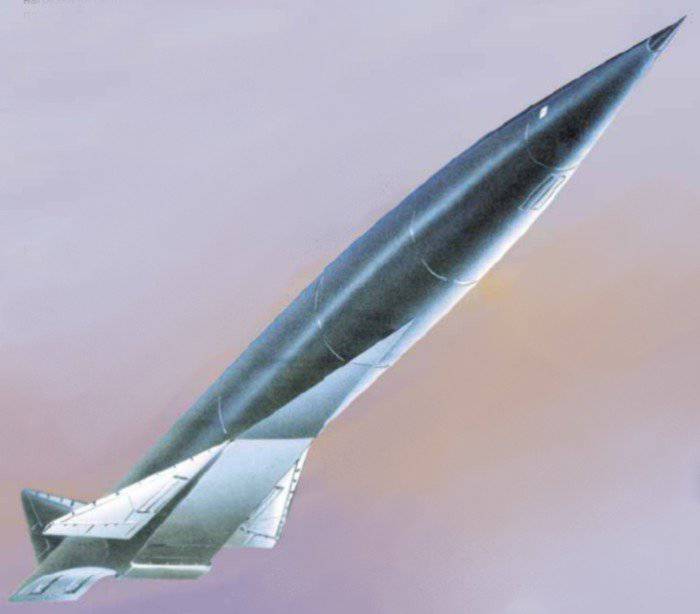
This plane should not go into orbit - it simply would not have enough fuel and engine thrust - but that was not its purpose. The Tu-2000 was intended to become a flying laboratory for testing manned flight at altitudes above 25-30 kilometers and speeds of the order of M = 6. For acceleration to hypersonic speeds once again were proposed direct-flow engines on liquid hydrogen in combination with turbojet.
The second version of the new project with the Tu-2000B index had a two and a half times greater take-off weight and large dimensions. It was on the basis of this project that in the future it was planned to make combat and passenger vehicles. For example, six direct-flow engines at a speed of M = 6 and an altitude of 30 km provided an estimated range of at least 10 thousand kilometers. The payload of the Tu-2000B in both variants reached 10-12 tons.
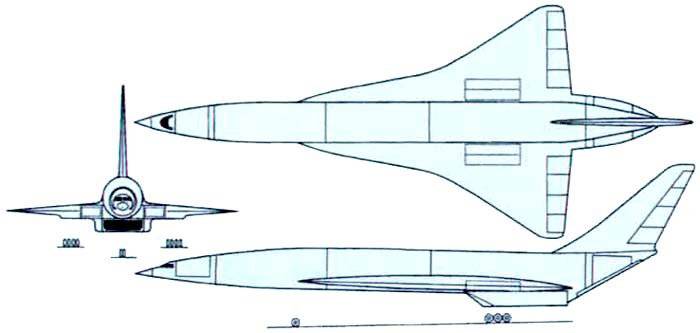
For the future Tu-2000А, the wing box, some elements of the fuselage and a number of fuel system components were manufactured. However, in the 1992 year, due to lack of funding, the project had to be frozen. Unfortunately, even in the nineties, the economic situation in the country led to the closure of both versions of the Tu-2000 and the EP project. As mentioned above, the construction of the latter was possible by the middle of 90's. For the Tu-2000, the approximate first flight time was determined in 13-15 years after the start of work. In other words, the Tu-XNUMHA was supposed to go on flight tests in the first half of the two thousandth. But so far this has not happened. Moreover, there is every reason to doubt that the EP and Tu-2000A projects will ever be resumed at all.
No prospects ...
Due to a number of not very pleasant events, almost half a century of experience and developments of the design bureau named. A.N. Tupolev in the field of hypersonic aircraft for various purposes was unclaimed. And, what does not add optimism, the closure of the DP, 130, OOS and Tu-2000 projects had a bad impact not only on the future of the Russian aerospace industry. Currently, due to the decommissioning of the American shuttle, the issue of a reusable space “truck” has become particularly acute. Around the world, various design offices are struggling with this problem, but so far there has been little success. Decent constructions are offered, however, unfortunately, they still do not have the characteristics that the working shuttle or the Soviet Tu-2000B didn’t fly.
On the materials of the sites:
http://alternathistory.org.ua/
http://vadimvswar.narod.ru/
http://airbase.ru/
http://airwar.ru/
http://www.sergib.agava.ru
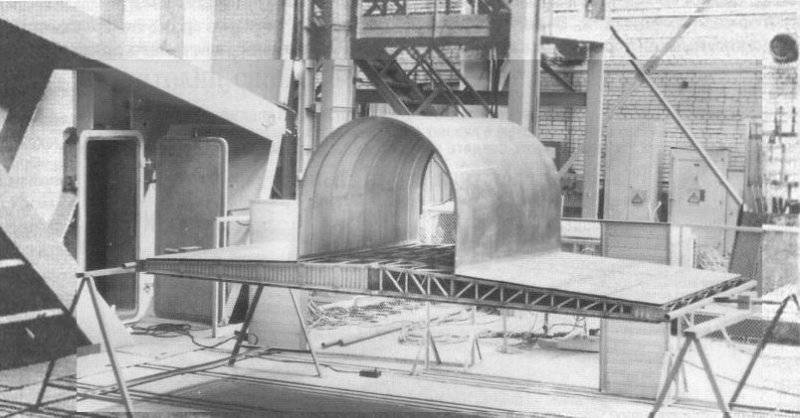

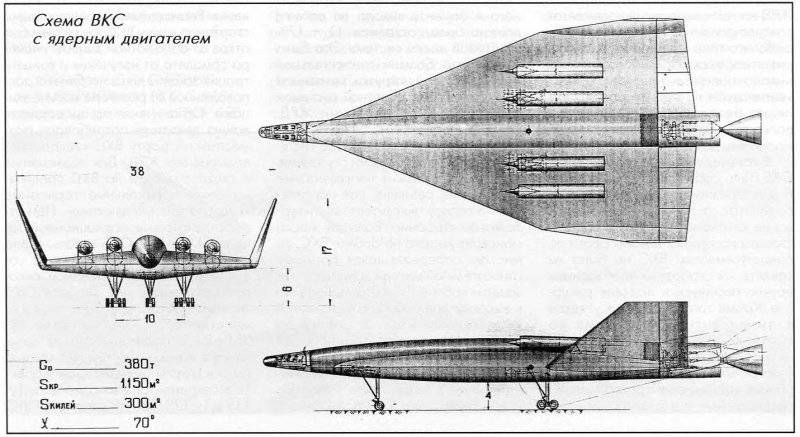

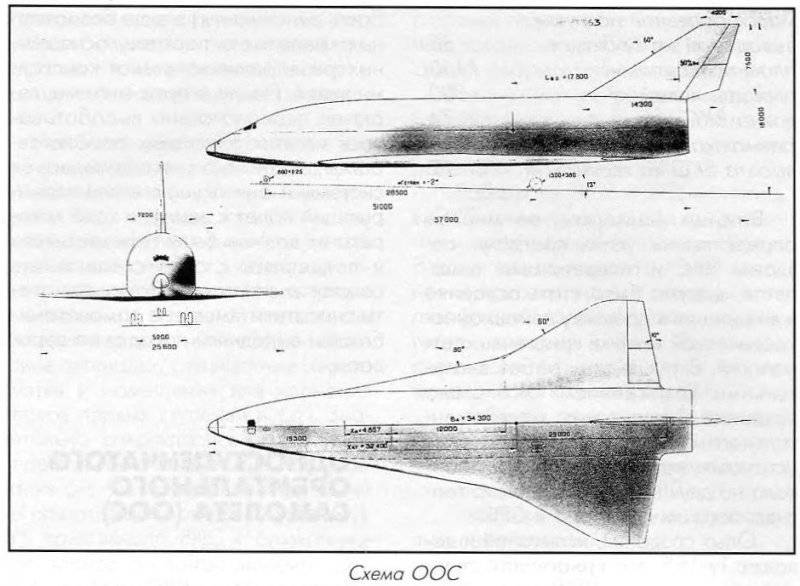
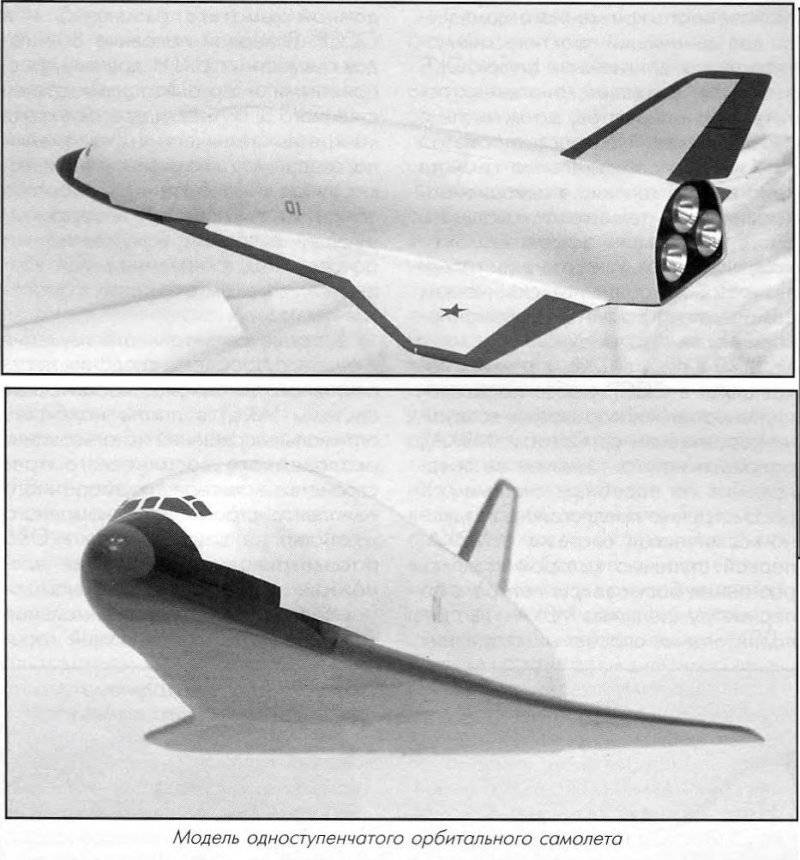
Information